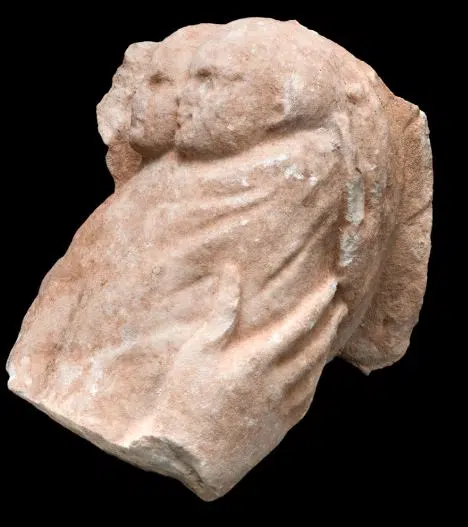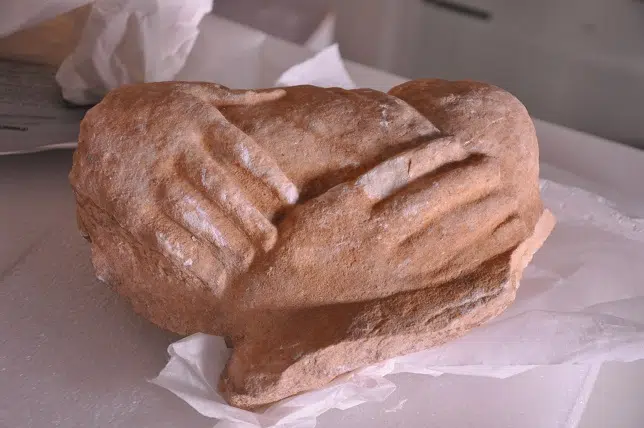
The only surviving funerary relief of the ancient Greek world depicting twin babies in the same arms was unveiled at the National Archaeological Museum of Athens and will be exhibited only for a few weeks, as part of the “Unseen Museum” exhibition project that brings to the fore antiquities stored in its vaults.
Known as the “stele of the twin babies,” the fragment, featuring two bundled twin babies in the arms of a female figure, is presented to the public for the first time since its 2008 discovery at a river bank by a scavenger who delivered the precious find to the museum.
The heads of the twins are standing out from their swaddling clothes and the mother’s hands are seen holding their little bodies next to each other.

Tombstone for a mother who died during childbirth
The “stele of the twin babies” is dated to the 4th century BC.
Archaeologists believe that the unique fragment is part of a tombstone that would have been erected on the grave of a woman who died in childbirth.
This is the only surviving funerary relief of the ancient Greek world depicting twin babies in the same arms, which indicates their common fate as orphans, the museum says in a statement.
The museum published a collage image of the stele of the twin babies with the relief of Philonoe, suggesting a reconstructed image of what the tombstone might have looked like as a whole.

The one-of-a-kind exhibit will be on display until May 13.
Special presentations will be held on Wednesdays March 27, April 10 and 24, and May 8, and on Sundays March 31, April 14 and 28, and May 12, at 1 p.m., when the public will be received by archaeologists to discuss the story of the find, child mortality in ancient Greece and ancient Greek myths involving twins.
Museum ticket holders on the day will need to express their interest to attend the presentation upon entry, as spaces are limited and admission will be granted on a first come basis.

Myths involving twin siblings frequent in ancient Greece
Twin siblings are a frequent theme in ancient Greek mythology.
Olympian gods Artemis and Apollo were twins, born to Zeus and Leto, and so were the children of gods Demeter and Poseidon, Despoina and Arion.
Poseidon and Zeus were said to have fathered more sets of twins with different mortal women.
A few famous sets of twins in Greek mythology were believed to have been born to different fathers each, only one of two being the child of a god, such as the Dioscuri – Castor and Pollux- and their twin sisters, Helen and Clytemnestra.
Prominent mortal couples in Greek mythology were also reported to have given birth to twins; twin sons Thessalus and Alcimenes were among Jason and Medea‘s ill-fated children, while Cassandra and Helenus were twin children of King Priam and Queen Hecuba of Troy, born with prophetic powers.
See all the latest news from Greece and the world at Greekreporter.com. Contact our newsroom to report an update or send your story, photos and videos. Follow GR on Google News and subscribe here to our daily email!



